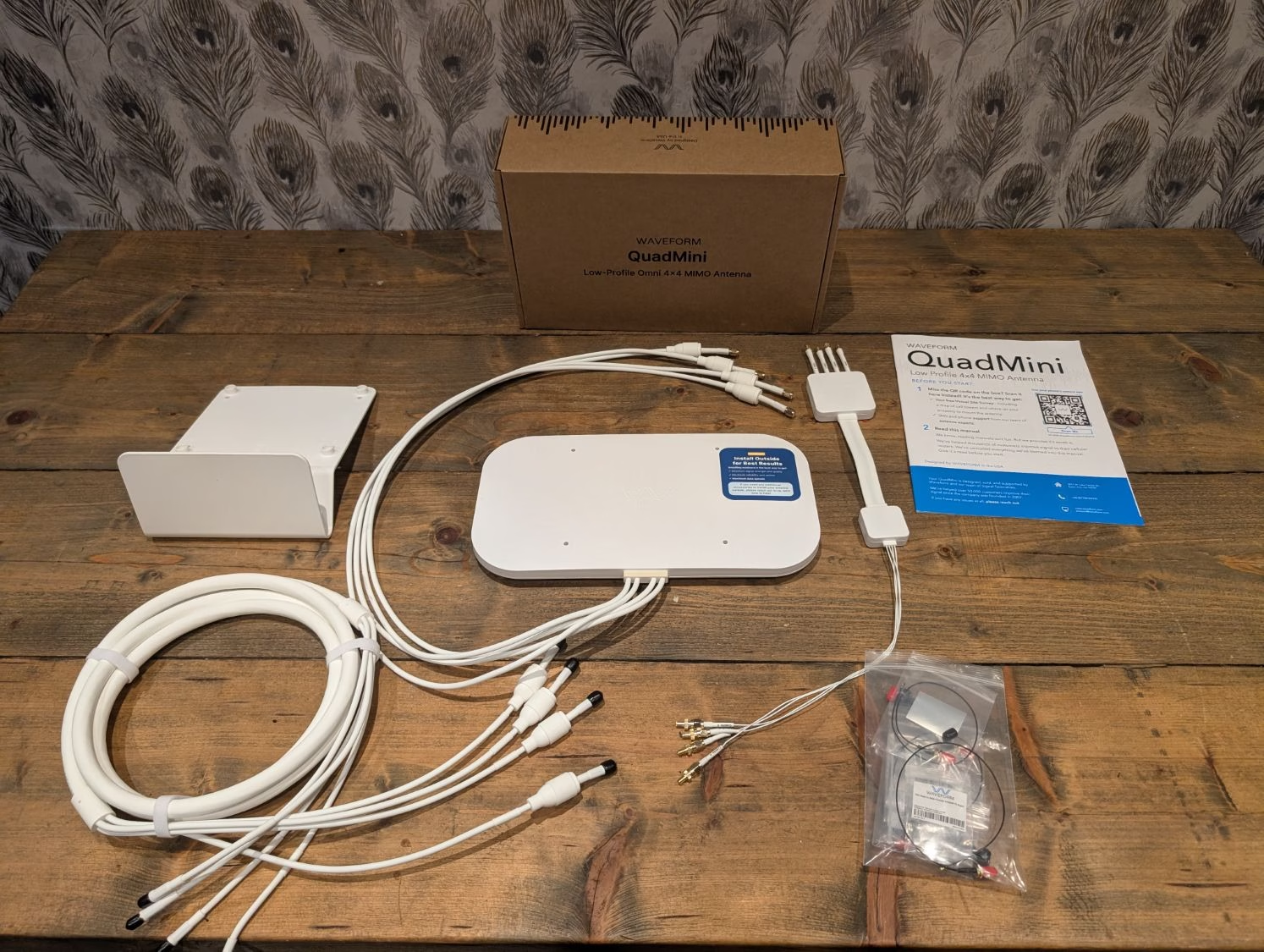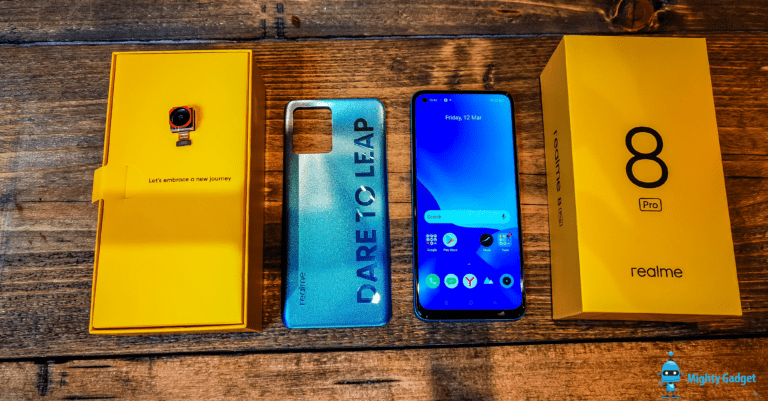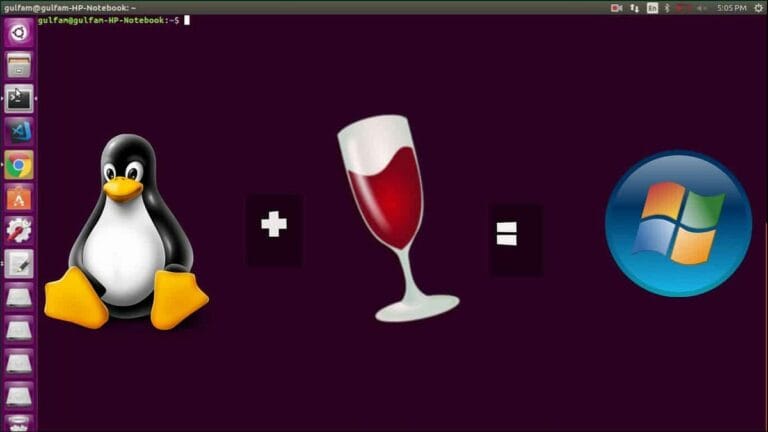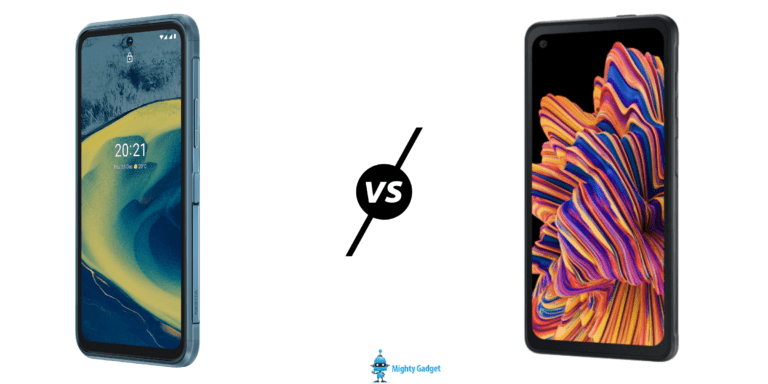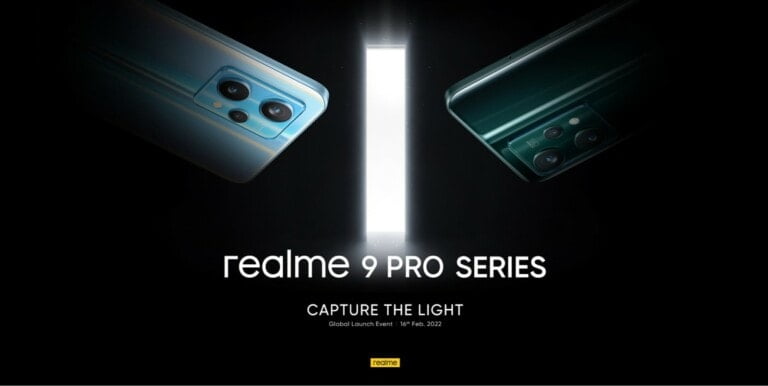Any links to online stores should be assumed to be affiliates. The company or PR agency provides all or most review samples. They have no control over my content, and I provide my honest opinion.
Waveform QuadMini Review
Summary
The Waveform QuadMini delivers an impressive improvement in mobile broadband performance, especially when paired with networks like Three, where download speeds more than quadrupled in testing. Its omnidirectional design makes installation straightforward without the need to locate a specific mast, and the complete kit provides flexible mounting options for different setups. Build quality is solid, and the accessories are well thought out, although the premium price for the kit may deter some buyers. For those reliant on 4G or 5G as their main internet connection, it offers reliable gains in both speed and stability, though long-term users may wish to source accessories separately for better value.
Overall
90%-
Overall - 90%90%
Pros
Significant speed improvement
Easy to install
Good build quality
Flexible mounting options
Cons
High accessory cost
Cables are bulky
Best results vary by network
I have previously reviewed several 5G and 4G routers, including the Zyxel Nebula FWA510 5G, and I have then experimented with external antennas to try and improve performance, but mostly had either disappointing results or inconsistent results.
More recently, I have had a nightmare with Virgin Media and their appalling customer service. There was a fault in my area (which now appears to have been a fault on my router) which lasted over 30 days with no resolution, and caused my upload speeds to drop to between 0.5mbps and 2mbps with significant packet drops.
This made general browsing frustrating, but uploading photos and videos was almost impossible, and online gaming or VOIP calls were effectively completely broken.
I have the Unifi Cloud Gateway Max with the Virgin Media HomeHub in modem mode, so I decided to dig out my Zyxel 5G router, buy an high data SIM and run this as my primary WAN connection with Virgin as the failover until the problem was resolved. Then the plan was to switch the 5G router to the failover, so I don’t have to worry about outages in the future.
Unfortunately, the speeds from the router were not amazing. I made the mistake of using a Mozillian SIM at first, with the EE network being reported as the best in the area, but the performance was poor. I then tried both Three and Lebara(Vodafone).
However, as I need a reliable and good connection for my work, I decided to invest in an external antenna to improve speeds and reliability, but quickly found that good antennas are very expensive.
On Amazon, the Waveform antennas are by far the best reviewed, so I reluctantly parted with £300 for the Waveform QuadMini complete kit.
So, was the investment worth it?
| Preview | Product | Rating | Price | |
|---|---|---|---|---|

| Waveform QuadMini: 4x4 MIMO Low-Profile Antenna Kit |... |
£299.99 | Buy on Amazon |
Related Reviews
- Poynting PUCK-5 Omni-Directional LTE / WiFi / GPS Antenna Review
- Poynting XPOL-1 V2 5G 3dBi Omni-Directional 2×2 MIMO LTE Outdoor Antenna Review
- Zyxel Nebula FWA510 5G Router Review
- Vodafone 5G Mobile Hotspot Review
- Netgear NBK752 Orbi 5G WiFi 6 Mesh System Review
Omnidirectional vs Directional 4G/5G Antennas
When buying an external antenna, one of the most important decisions you must make is whether to buy an omnidirectional or directional antenna.
The names make themselves explanatory; the directional antenna needs to be pointed towards the 5G mast you pick up your signal from, whereas omnidirectional antennas can pick up a signal from any direction, making them much easier to install.
The Waveform QuadMini is an omnidirectional antenna, which offers significant advantages for most users. Unlike directional antennas such as the Waveform QuadPro, which require precise positioning towards cell towers, the QuadMini can receive signals from all directions. This design choice makes it particularly suitable for urban environments where signals may bounce off buildings or in situations where the nearest cell tower location is unknown.
In my experience, this omnidirectional characteristic proved invaluable. My installation site had obstructions including a large cherry tree in the garden, and the nearest mast was positioned at an angle that would have made directional antenna placement challenging. The QuadMini’s ability to capture signals from multiple directions helped mitigate these environmental challenges.
That being said, if you want the best performance possible and can position the antenna so it faces a 5G mast, then a directional antenna would provide the best results.
Specification
| Category | Waveform QuadMini |
| Frequency Range | 600–900 MHz, 1700–2700 MHz, 3500–4200 MHz, 5000–6000 MHz |
| Average Peak Gain | 2.5 dBi ± 0.8 dB (600–900 MHz) |
| 5.3 dBi ± 0.4 dB (1700–2700 MHz) | |
| 5.4 dBi ± 0.3 dB (3500–4200 MHz) | |
| 5.8 dBi ± 0.4 dB (5000–6000 MHz) | |
| Beamwidth (Azimuth/Elevation) | 360° Omni-Directional |
| VSWR | ≤ 1.8, ≤ 2.4, ≤ 1.9, ≤ 1.8 (per band) |
| MIMO Isolation (Peak) | 35.1 dB, 45.0 dB, 40.9 dB, 79.2 dB |
| Efficiency (Peak) | 86%, 80%, 67%, 64% |
| Input Impedance | 50 Ω |
| Polarization | 4×4 Cross-Polarized, ± 45° |
| Antenna Type | Omni-Directional |
| Power Rating | 50 W (Peak) |
| Environmental Protection | IP65, IK08 impact rating, UV rated |
| Wind Rating | 200 kph (125 mph) |
| Operating Temperature | -40 °C to +65 °C (-40 °F to +150 °F) |
| Lightning Protection | DC Ground |
| Radome Colour / Material | White (RAL 9003) / ASA (UV Stabilized) |
| Dimensions (W × H × D) | 32.6 × 18.0 × 1.5 cm (12.8 × 7.1 × 0.6 in) |
| Connector | SMA-Male |
| Cable Type / Length | Ultraflex LMR195 / 1.0 m (3.3 ft) |
| Cable Jacket Colour / Material | White / TPE |
| Cable Bending Radius | 50 mm (repeat), 25 mm (install) |
| Cable Boot Material | Silicone Rubber |
| Weight | 0.64 kg (1.41 lbs) |
Frequency Coverage and Gain
The antenna covers four distinct frequency ranges:
- 600-900 MHz with 2.5 dBi average peak gain
- 1700-2700 MHz with 5.3 dBi average peak gain
- 3500-4200 MHz with 5.4 dBi average peak gain
- 5000-6000 MHz with 5.8 dBi average peak gain
These frequency ranges cover all the major UK cellular bands, including the crucial 3.5GHz 5G bands that EE, Three, and Vodafone use for their high-speed 5G services. The gain figures are respectable for an omnidirectional antenna, though naturally lower than what you’d achieve with a properly positioned directional antenna.
Waveform QuadMini vs Waveform QuadPro Specification / Features
Understanding the differences between the QuadMini and QuadPro helps clarify the intended use cases for each antenna. The QuadPro, priced at £288 for the antenna alone or £450 for the complete kit, represents Waveform’s premium directional offering.
The key distinction lies in the antenna type and resulting performance characteristics. The QuadPro is a directional panel antenna with significantly higher gain figures – up to 11.5 dBi compared to the QuadMini’s maximum 5.8 dBi. This higher gain translates to better signal reception, but only when the antenna is properly aligned with the serving cell tower.
The QuadPro also features a more robust construction with larger dimensions (43.2 × 29.2 × 7.6 cm versus the QuadMini’s 32.6 × 18.0 × 1.5 cm). This size difference reflects the different antenna technologies employed – the larger size of the QuadPro enables its directional characteristics and higher gain.
For most users, particularly those in urban or suburban environments with decent cellular coverage, the QuadMini represents better value. The convenience of omnidirectional operation often outweighs the performance advantage of directional antennas, especially when installation complexity is considered.
Unboxing / Design
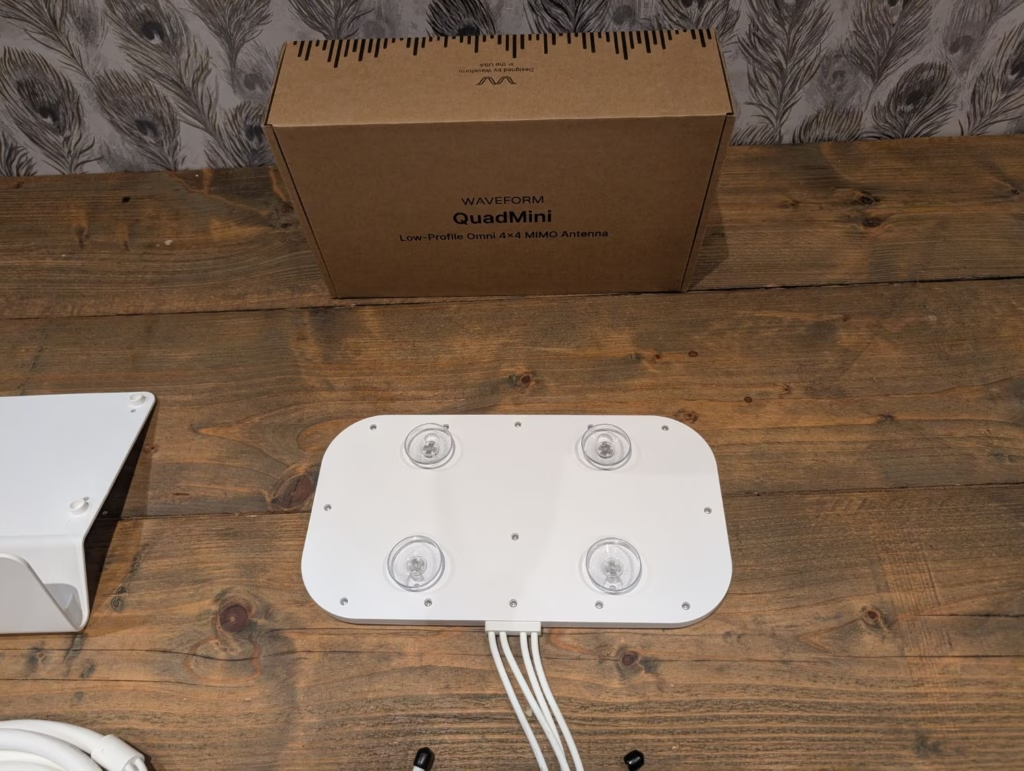
Opening the QuadMini complete kit reveals a comprehensive package that addresses most installation scenarios. The antenna itself is surprisingly compact and lightweight, with a sleek low-profile design that doesn’t scream “antenna” when mounted indoors.
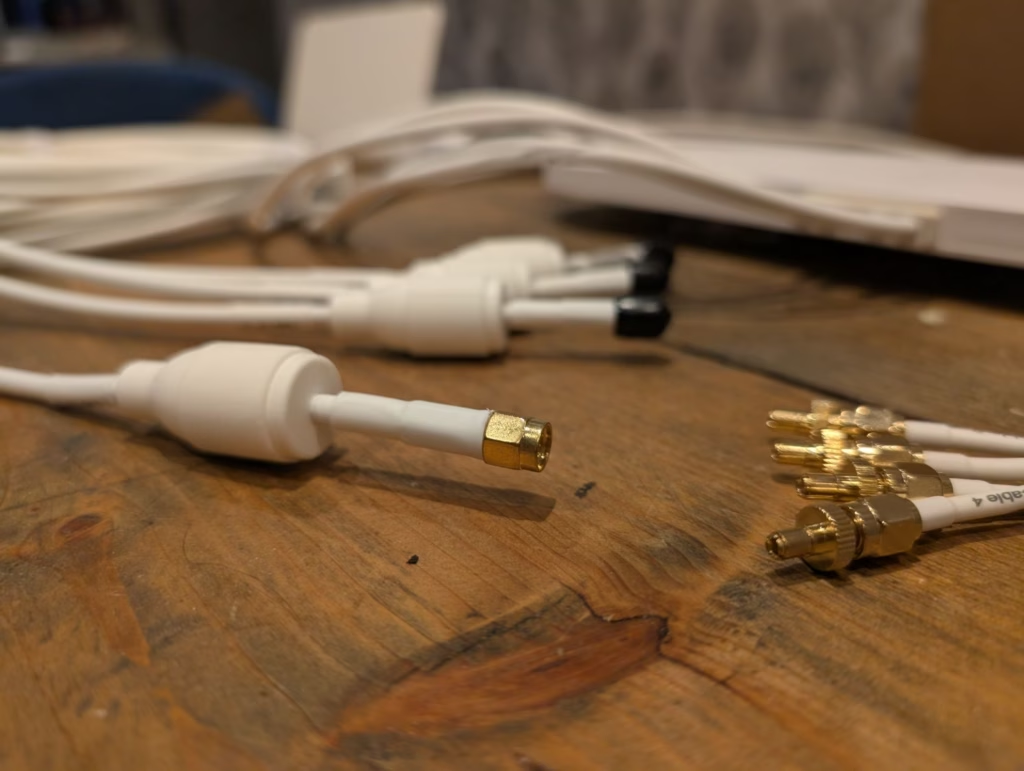
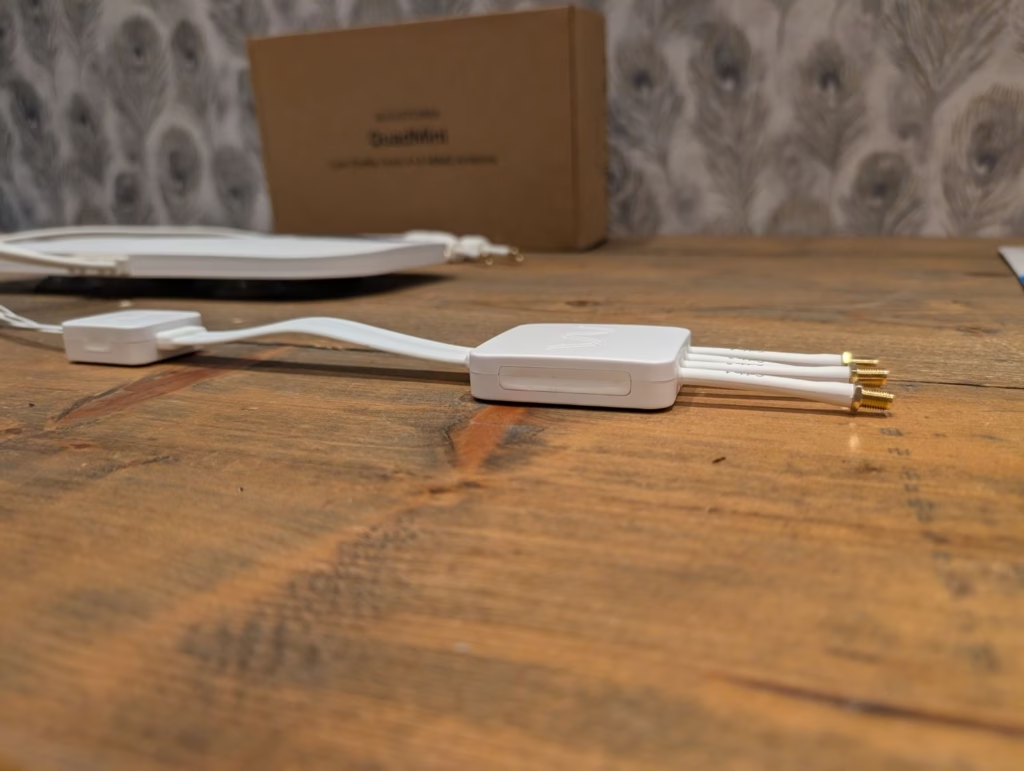
The accessories included in the complete kit demonstrate thoughtful design. The desktop stand allows for quick testing and temporary installations. The suction cups thread directly into the antenna’s mounting points, creating a secure window mounting solution. The pole mounting hardware accommodates poles from 25mm to 45mm in diameter, covering most standard installations.
The window entry cable deserves particular mention. At approximately 2.3mm thick in its flexible section, it’s designed to pass through closed windows without requiring drilling. This addresses one of the biggest barriers to external antenna installation for renters or those unwilling to modify their homes.
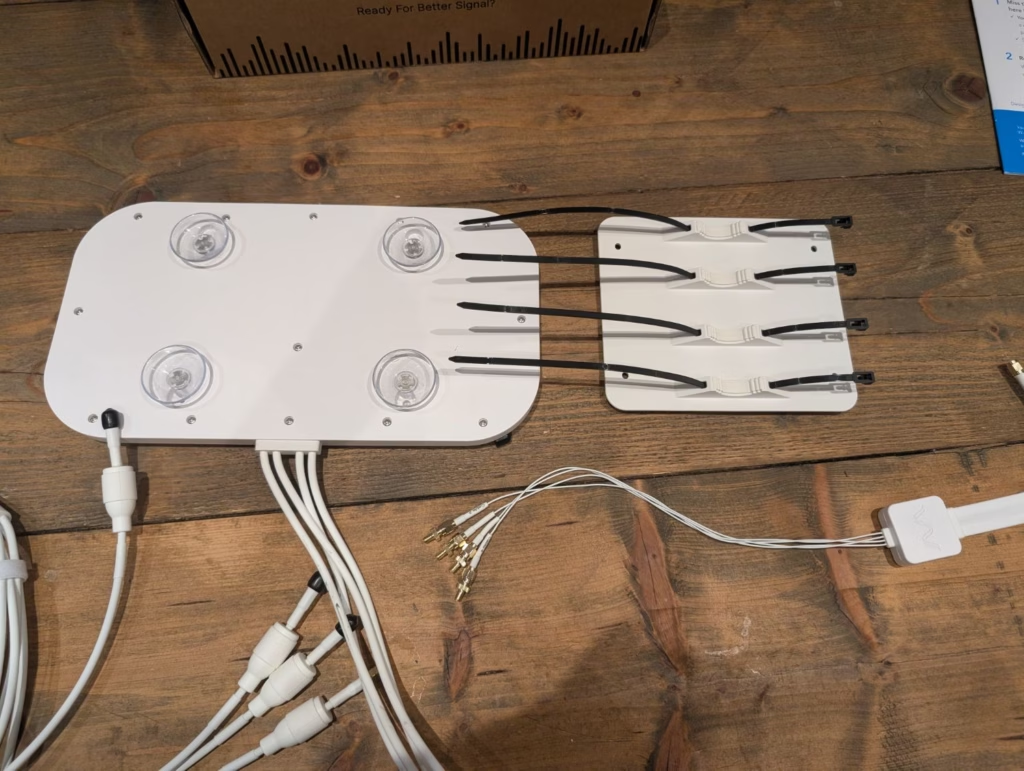
The build quality throughout feels appropriate for the price point. The antenna housing appears robust enough for outdoor use, while the accessories strike a reasonable balance between functionality and cost.
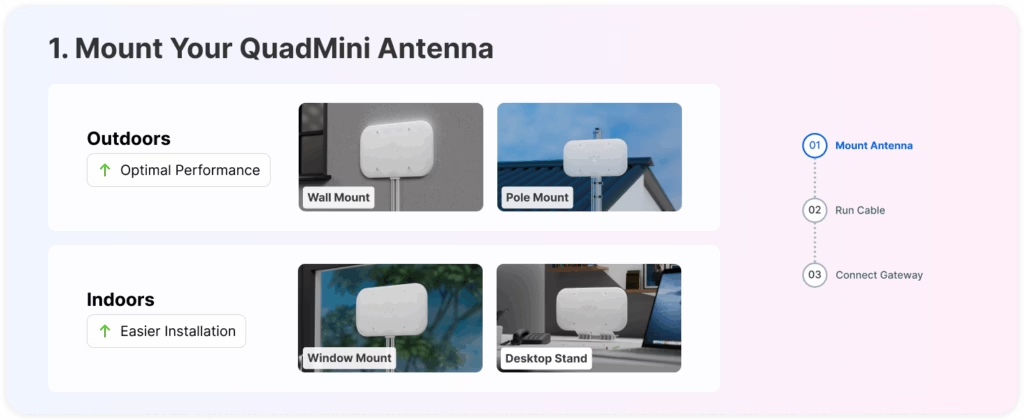
Usage Scenario and Installation
My installation was sub-optimal, so you should factor this in when forming your opinion of this antenna.
My Zyxel Nebula FWA510 is in my downstairs front room with the QuadMini stuck to the window outside. We have a large cherry tree in the garden, and the nearest mast is on a water tower nearby, but to the left of where I mounted the antenna, so it wasn’t in direct line of sight.
In terms of installation, it is very easy, but making it neat is more challenging. The antenna itself has a reasonable length cable, and the cables are quite thick. The extension cable is very thick, and then you have the SMA adaptor cable.
While I had planned to use the window entry cable, as I placed the antenna on the window, its cables could fit through the window as is, and with the weather being warm, I just partially closed it. I then had to place the router on the windowsill to reach the cables.
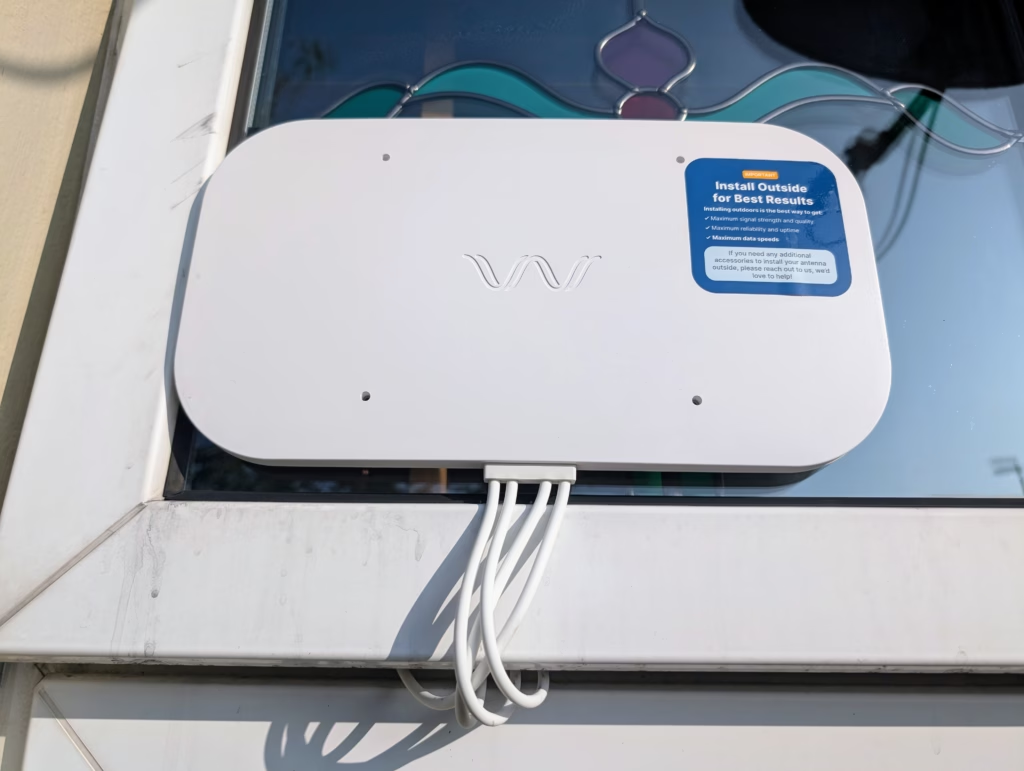
So, it took me 5 minutes to install, but it looked like a mess. For long-term installation, you will need to plan it out a bit, and if you are spending this much on an antenna, it would be worth doing a proper job in terms of placement.
The suction cup mounting proved reliable during my testing period. The four large suction cups provide adequate holding force, and the mounting system feels secure even with the antenna positioned outdoors. However, the aesthetic impact of the cables running through the window shouldn’t be underestimated – this is definitely a functional rather than elegant solution.
For users planning permanent installations, the wall mounting option would likely provide a cleaner appearance. The included screws and anchors appear suitable for most wall types, though you’d want to verify compatibility with your specific wall construction.
Performance
I tested the QuadMini with both Three and Labara/Voxi SIM cards to assess performance across different networks. The results varied significantly between carriers, highlighting the importance of network selection in addition to antenna choice.
Three Network Performance
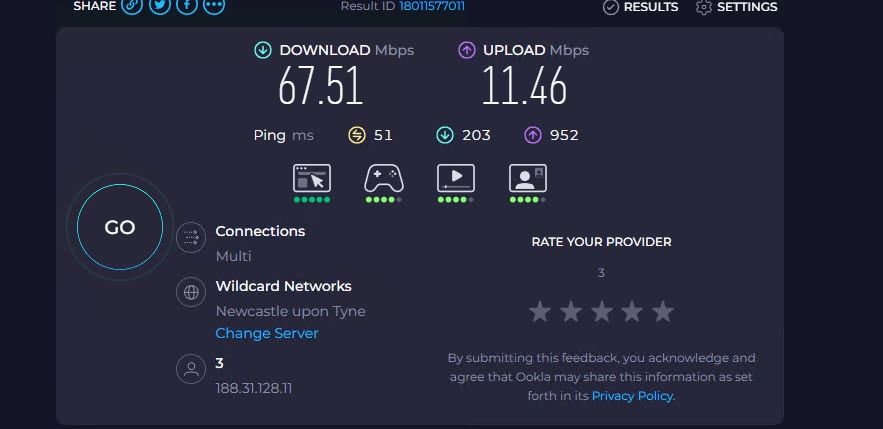
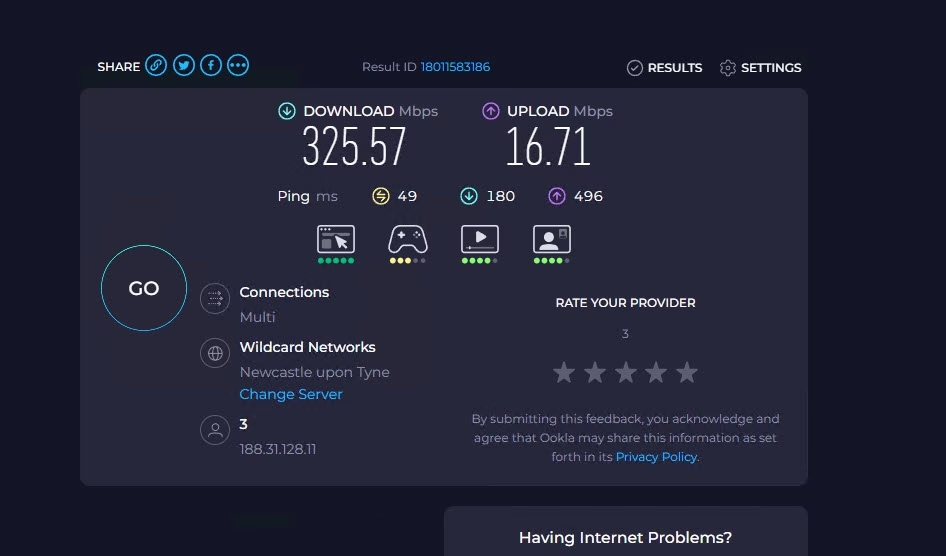
The results with Three were particularly impressive:
- Without antenna: 68Mbps down, 11.46Mbps up, latency of 203/952ms, ping of 51ms
- With antenna: 325Mbps down, 16Mbps up, latency of 180/496ms, ping of 49ms
This represents a 378% increase in download speed, with modest improvements in upload speed and latency. The download speed improvement was substantial enough to transform the connection from adequate to genuinely fast broadband that could easily handle multiple simultaneous users and high-bandwidth applications.
Labara/Voxi (Vodafone) Network Performance
The Vodafone network results were more modest:
- Without antenna: 50Mbps down, 62Mbps up, latency of 266/183ms, ping of 87ms
- With antenna: 90Mbps down, 76Mbps up, latency of 197/163ms, ping of 64ms
While still showing improvement (80% increase in download speed), the gains were less dramatic than with Three. This likely reflects the different network architectures and signal conditions for each carrier at my location.
Signal Quality Metrics
Beyond speed tests, examining the underlying signal quality metrics provides insight into the antenna’s effectiveness. The improvement in RSRP (Reference Signal Received Power) and RSRQ (Reference Signal Received Quality) values demonstrated the antenna’s ability to enhance signal reception even in challenging conditions.
The fact that the antenna enabled consistent 5G connectivity where previously only 4G was available represents a significant qualitative improvement beyond the raw speed figures.
Price and Alternative Options
| Preview | Product | Rating | Price | |
|---|---|---|---|---|

| Waveform QuadMini: 4x4 MIMO Low-Profile Antenna Kit |... |
£299.99 | Buy on Amazon |
The prices below are all accurate on the 12th of August 2025.
The Waveform QuadMini is available on Amazon for £165, which is just for the antenna itself.
They then have the complete kit, which includes a Window entry cable, a good quality 3m quad SMA cable, a desktop stand, window suction cups and connections for pole mounting. This takes the price up to £299. It feels quite expensive paying £135 for these accessories.
Waveform then have the QuadPro is £288 for the antenna or £450 for the complete kit. Remember, this is a directional antenna.
The Maswell 4G LTE 5G Antenna is well reviewed and priced at £200, but lacks all the convenient mounting options.
For budget options, I have previously reviewed the Poynting XPOL-1, which is a 2×2 antenna which is available for £80. With this, I saw no speed improvements, but the signal was more reliable.
Poynting then has a 4×4 model, which is available for £148.
The Poynting PUCK-5-W antenna is more suited for vehicles and is priced at £95.
Overall
This is the first external mobile antenna that I have tried, which has provided a substantially improved performance.
The results were particularly impressive with Three. If this were the only Internet connection available, the jump from 68 Mbps down to 325 Mbps down would make a huge difference in modern Internet habits.
In my situation, Virgin has finally resolved the fault, and I am due to have CityFibre installed, so the 5G router is being demoted to a failover. My 3 SIM only lasts until October, and Lebara is cheaper per month, so I am sticking with that. As the performance gains were not as significant, I have decided not to keep the antenna; the performance is adequate enough as a backup connection.
However, that doesn’t mean I don’t recommend this antenna. If you are reliant on 4G/5G data for your Internet, then I can thoroughly recommend it.
The complete kit is excellent for making the initial setup simple, but if this is a long-term installation, then I’d consider shopping around and finding quality parts at a lower price. Just make sure you buy good-quality cables, or the signal will degrade.
Overall, while this is certainly expensive, the performance is fantastic, so it gets a strong recommendation from me.
Waveform QuadMini Review
Summary
The Waveform QuadMini delivers an impressive improvement in mobile broadband performance, especially when paired with networks like Three, where download speeds more than quadrupled in testing. Its omnidirectional design makes installation straightforward without the need to locate a specific mast, and the complete kit provides flexible mounting options for different setups. Build quality is solid, and the accessories are well thought out, although the premium price for the kit may deter some buyers. For those reliant on 4G or 5G as their main internet connection, it offers reliable gains in both speed and stability, though long-term users may wish to source accessories separately for better value.
Overall
90%-
Overall - 90%90%
Pros
Significant speed improvement
Easy to install
Good build quality
Flexible mounting options
Cons
High accessory cost
Cables are bulky
Best results vary by network
Last update on 2025-12-26 / Affiliate links / Images from Amazon Product Advertising API

